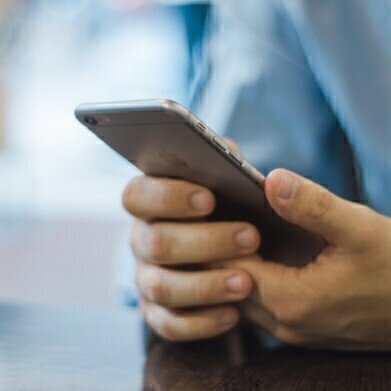LC-MS
How Does Chromatography Hack into Your Phone?
Jan 20 2017
The cornerstone of forensic science was fingerprinting — it is now DNA testing that seems to be the gold standard for crime detection. But technology moves on — and with it the ideas of scientists. Scientists at the University of California at San Diego (UCSD) have published a paper detailing a proof-of-concept study in the Proceedings of the National Academy of Sciences that could offer not only the next profiling technique for forensic science, but also offer applications in areas as diverse as airport screening and environmental exposure. And they demonstrated the idea using the ubiquitous mobile phone.
It’s like phone hacking — only different
Usually, when someone tells you that your phone has been or hacked, your conversations or voicemails have been listened to by another party. One way that your mobile phone can link you with a crime. But the UCSD team have demonstrated that your phone could possibly tell the police even more about you.
We leave traces everywhere we go — chemicals from our bodies adhere to everything we touch. The UCSD team have shown that by sampling and analysing these minute traces on mobile phones it could be possible to generate a lifestyle profile of the phone’s owner. What food you eat, what medicines you take, what you use to shower with and where you have been.
In a press release from the UCSD, Pieter Dorrestein lead author on the study stated:
“All of these chemical traces on our bodies can transfer to objects. So we realized we could probably come up with a profile of a person’s lifestyle based on chemistries we can detect on objects they frequently use.”
Chromatography detection
The team swabbed samples from the mobile phones and right hands of thirty-nine healthy volunteers — making almost 500 samples in all. The team then used UPLC-Q-TOF MS/MS (a liquid chromatography system followed by mass spectrometry) analysis to identify the trace elements they found. They used an existing molecular database as the source of the reference molecules they compared the samples against. More information about the latest LC-MS applications can be found from the article, New Clinical, Forensic and Bioanalysis LC & LC-MS Applications Guide.
The UCSD team found evidence of medications taken, food eaten and lotions applied. Amina Bouslimani, an author on the paper stated:
“By analyzing the molecules they’ve left behind on their phones, we could tell if a person is likely female, uses high-end cosmetics, dyes her hair, drinks coffee, prefers beer over wine, likes spicy food, is being treated for depression, wears sunscreen and bug spray — and therefore likely spends a lot of time outdoors — all kinds of things.”
The idea is in its early days though and the team knows that the application will only be as good as the reference database — just like the DNA or fingerprint databases, if the sample isn’t there you cannot identify it. But watch this space — because chromatography knows where you’ve been.
Digital Edition
Chromatography Today - Buyers' Guide 2022
October 2023
In This Edition Modern & Practical Applications - Accelerating ADC Development with Mass Spectrometry - Implementing High-Resolution Ion Mobility into Peptide Mapping Workflows Chromatogr...
View all digital editions
Events
Apr 23 2024 Kintex, South Korea
Apr 23 2024 Seoul, South Korea
Apr 28 2024 Montreal, Quebec, Canada
May 05 2024 Seville, Spain
May 15 2024 Birmingham, UK














